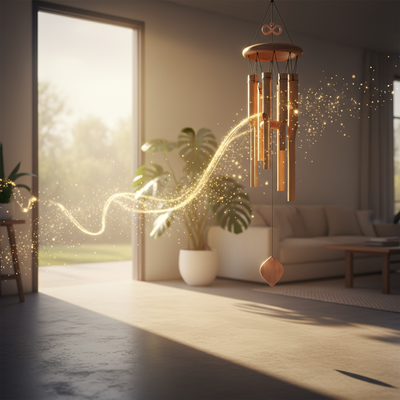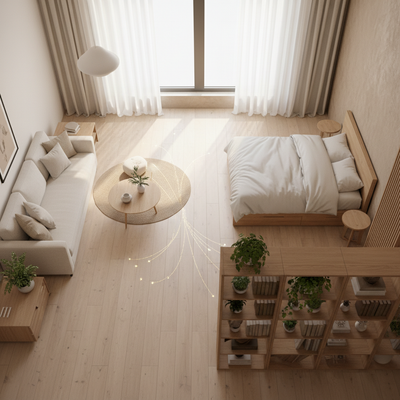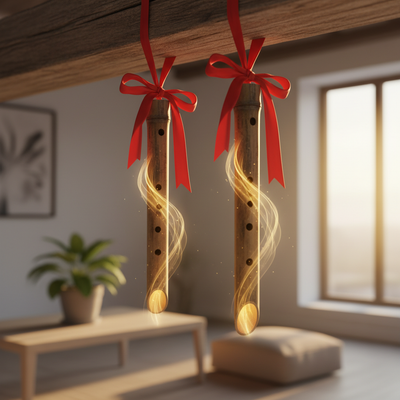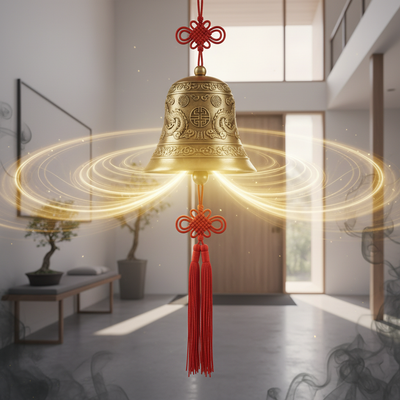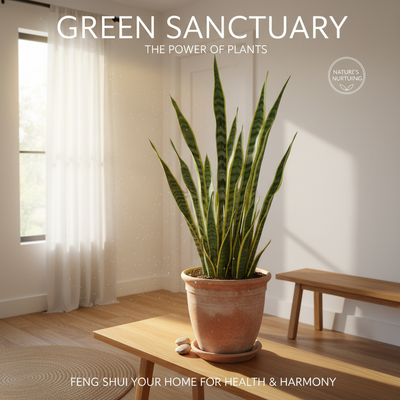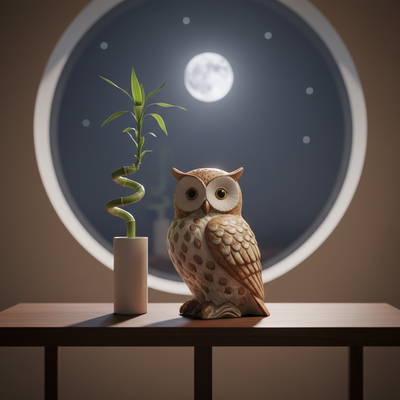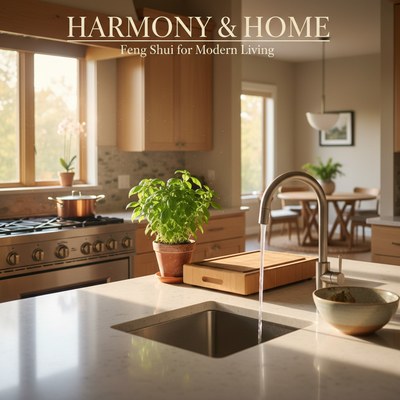Can you put photos in your bedroom? This is one of the most common questions people ask about Feng Shui. The simple answer is: yes, but you need to choose them carefully. Your bedroom is more than just a place to sleep. It's a safe space for rest, healing, and romance. The pictures you put in this private space have a big impact on its energy, or Qi. They can either help your well-being and relationship or create problems that you might not even notice. Understanding this difference is the key to creating a truly peaceful space.
This guide will give you the knowledge and confidence to make the right choices. We will go beyond simple rules and explain the reasons behind them, helping you arrange your space with purpose. Here is what you will learn:
- The basic Feng Shui rules for bedroom pictures.
- A clear list of photos that bring positive energy.
- A complete guide to photos you should avoid.
- Expert tips on where to place photos for the best results.
- How to choose the right frames and keep your photos' energy strong.
The Why: Bedroom Imagery

To use Feng Shui principles correctly, we must first understand the energy role of the bedroom. This space is mainly a place of Yin energy. Yin represents the quiet, peaceful, and healing parts of life. It's the energy of stillness, darkness, and peace that lets your body and mind recharge. On the other hand, Yang energy is active, bright, and outward-facing. While Yang energy is important for other areas of your home and life, too much Yang energy in the bedroom can cause restless sleep, worry, and a feeling of being constantly "on."
Pictures are powerful carriers of energy. Every photo or piece of art you display sends out a specific energy that influences the Qi (Life Force Energy) in the room. Active, busy, or emotionally charged images bring strong Yang energy, disrupting the calm Yin environment needed for rest. Pictures direct the flow of Qi, and the images in your bedroom are constantly sending hidden messages to you, even while you sleep. The goal is to choose pictures that support the bedroom's main purposes, not work against them.
Rest & Relationships
The bedroom has two main purposes from a Feng Shui view: deep rest and close connection. All decoration choices, especially photos, should be filtered through this understanding. Ask yourself: does this image help create peace? Does it support my (or our) sense of calm? For those in a relationship, the next question is important: does this image strengthen our bond as a couple? The photos you choose should be a visual reminder of love, partnership, and peace.
Energetic Imprints
Think of a photograph as an energy imprint frozen in time. A picture from a happy, sunny vacation carries the energy of that joy and warmth. A photo from a stressful family gathering, even if everyone is smiling, can hold the hidden tension of that moment. These imprints continuously spread into your space. By carefully choosing which imprints to display, you take active control over the energy story of your most personal space. This is the basic practice for using feng shui photos in bedroom effectively.
The Dos: Nurturing Photos
Choosing the right photos for your bedroom is an act of self-care and relationship care. The goal is to select images that create gentle, supportive, and loving energy. These are the types of photos that will make your space feel like a sanctuary and align with good Feng Shui principles. Here are the best categories to focus on, along with why they work.
You and Your Partner
For those in a relationship, this is the most powerful and important type of photo to display in the bedroom. A picture of you and your partner together serves as a constant, positive reminder of your union. It visually anchors the energy of the partnership in the space meant for it.
Choose a photo that shows a truly happy and loving moment. It should be a picture where you both look joyful and connected. Recent photos are usually better as they reflect the current state and future of your relationship, rather than keeping it stuck in the distant past. This visual cue strengthens your bond on a hidden level, reminding both of you that the bedroom is a shared space for your partnership to grow.
- Quick Takeaway: Select a happy, recent photo of the two of you.
- Why it Works: Strengthens the romantic bond and celebrates the partnership.
- Best Placement: The Relationship corner (Southwest) is ideal.
Evocative Nature Scenes
Nature is a powerful source of grounding and healing energy. Bringing images of the natural world into your bedroom can create a deep sense of peace and calm. However, the type of nature scene is important. You want to create feelings of peace, growth, and stability.
Look for images of calm, peaceful landscapes. A quiet forest path, a peaceful meadow at dawn, or a beautiful, blooming garden are excellent choices. Images showing pairs of animals, such as mandarin ducks or swans, are particularly good as they are powerful symbols of love, faithfulness, and partnership. Peonies, which symbolize romance and happy marriage, are also a wonderful choice. Avoid scenes that are empty, stormy, or feature harsh, jagged landscapes, as they bring unsettling energy.
- Quick Takeaway: Choose calm landscapes or pairs of animals.
- Why it Works: Grounds the room's energy and symbolizes peace and partnership.
- Examples: A peaceful lake, a pair of doves, blooming flowers.
Soft, Flowing Abstract Art
If you prefer non-realistic imagery, abstract art can be a beautiful choice for the bedroom, as long as it fits with the room's energy needs. The key is to select pieces that have a soft, flowing, and gentle quality.
Choose art that features soft curves, circles, and flowing lines rather than sharp, angular, or chaotic shapes. The color choice is also important. Choose colors associated with love, romance, and relaxation, such as shades of pink, soft reds, earthy tones, and muted pastels. The overall feeling of the piece should be uplifting, soothing, and sensual. This type of art can promote a gentle, harmonious flow of Qi without the specific energy imprint that comes from a photograph of a person or a specific place.
- Quick Takeaway: Select abstract art with soft curves and romantic colors.
- Why it Works: Encourages a gentle flow of Qi and sets a sensual, relaxing mood.
The Don'ts: Disruptive Photos
Just as some images can help your bedroom's energy, others can actively disrupt it. Avoiding these common mistakes is one of the quickest ways to improve the Feng Shui of your personal sanctuary. Many people unknowingly place photos in their bedroom that bring energies of stress, obligation, loneliness, or sadness. This section provides a clear guide on what to remove and, more importantly, the Feng Shui reasoning behind why you should. Being mindful of what you exclude is as powerful as being intentional about what you include.
The following table breaks down the types of images to avoid and the potential negative energy consequences they can have on your space of rest and intimacy.
| Image to Avoid | Feng Shui Reason (The "Why") |
|---|---|
| Photos of Family & Friends | The bedroom is for you and your partner. The energy of other family members (even positive) can create a sense of being "watched" and interfere with intimacy. It subconsciously puts pressure on the relationship by bringing the energies and expectations of others into your private space. |
| Photos of Water | While calming elsewhere, large bodies of water in the bedroom can be problematic. Images of oceans, powerful rivers, or waterfalls can symbolize overwhelming emotions, financial instability, or a "drowning" feeling. A very small, peaceful stream might be acceptable, but crashing waves are a definite no. |
| Photos of Single Individuals | A photo of a single person, whether it's yourself or someone else, promotes solitary energy. For a couple, this can energetically create distance. For a single person seeking a partner, it can strengthen the energy of being alone rather than creating an energetic space to welcome a new relationship. |
| Aggressive or Sad Imagery | This seems obvious, but it's a common mistake. This includes photos or art showing predators, battle scenes, weapons, crying people, or empty landscapes (like a lone dead tree or a desert). They bring energies of conflict, sadness, struggle, and danger into your place of rest. |
| Photos of Deceased Relatives | Honoring ancestors is an important practice, but the bedroom is not the right place for it. These photos can bring a heavy Yin energy of grief, sadness, and loss into a space meant for vibrant life, healing, and intimacy. Create a separate, respectful space for these photos elsewhere in your home. |

| Religious or Spiritual Figures | Your spiritual practice is deeply personal, but the bedroom is primarily a sensual, intimate space. Placing images of deities, gurus, or spiritual masters here can create a conflict of energy. It can bring a sense of being judged or watched, which prevents intimacy and relaxation. These images are better suited for an altar or meditation space. |
The Art of Placement
Once you have chosen the right photos, the next step is strategic placement. In Feng Shui, where you place an object is just as important as what the object is. The placement of your photos can amplify their positive energy and ensure they are working to support your goals for rest and romance. Simply hanging a picture on a random wall is a missed opportunity. By understanding the key energy zones in your bedroom, you can place your photos with intention to create a powerful, positive impact.
This section provides a practical roadmap for positioning your chosen images. We will move beyond general advice to give you specific, actionable guidance that empowers you to become the architect of your bedroom's energy flow.
The Relationship Power Spot
In Feng Shui, every room has a "Bagua map," an energy grid that corresponds to different areas of your life. The corner associated with Love and Relationships is the Southwest. This is the primary power spot for placing a photo of you and your partner.
To find it, stand at the main door of your bedroom and look into the room. The far-right corner is your Relationship area. Placing a happy, loving photo of the two of you here powerfully activates and enhances the energy of your partnership. It acts as an energy anchor for your union. Frame the photo in a material that feels supportive, such as wood for growth or earth-toned ceramics for stability, and keep the area clean and uncluttered.
The Wall You See First
The first thing you see when you wake up in the morning sets the energy tone for your entire day. The wall opposite your bed is therefore a highly influential location. What you place here sends a direct message to your subconscious mind at the start of each day.
This is an excellent spot for an image that represents your shared goals and hopes as a couple or your personal desire for peace and calm. A beautiful, peaceful landscape that creates a feeling of calm expansion is a wonderful choice. An inspiring piece of abstract art with soft, uplifting colors also works well. Avoid placing a photo of yourselves directly opposite the bed, as this can sometimes create a feeling of being watched, which we will discuss next.
Placement No-Go Zones
Just as there are ideal spots, there are also a few locations where photos are best avoided.
- Directly Over the Bed: Hanging a heavy framed picture directly over your headboard can create a subconscious sense of threat or pressure while you sleep. This is known as a "sha qi" or attacking energy source. It's best to keep the space above your head clear and free.
- Directly Facing the Bed: As mentioned, a large photo of people (even yourselves) directly facing the bed can create the feeling of being observed, which can disrupt restful sleep and intimacy. Your sleeping self is in a passive, vulnerable Yin state, and the active Yang energy of being "watched" is disruptive. If you must place art here, a peaceful landscape is a much better choice than a portrait.
Beyond the Image Itself
A truly complete Feng Shui approach considers every aspect of an object, not just its surface appearance. When it comes to feng shui photos in bedroom, the energy of the image is most important, but it doesn't end there. The frame, the physical condition of the photo, and your own emotional connection to it all contribute to its overall energy footprint. Paying attention to these subtle details shows a deeper level of intention and can significantly improve the quality of Qi in your sanctuary. This perspective moves you from simply following rules to mastering the art of energy curation.
Frame Materials Matter
The frame is not just a border; it's an energy container for the image. The material of the frame adds its own elemental quality, which can be used to enhance your intention.
- Wood Frames: Associated with the Wood element, these frames promote energy of growth, vitality, and family. They are an excellent choice for a couple's photo, symbolizing a growing and healthy relationship.
- Metal Frames: Associated with the Metal element, these frames bring in energy of clarity, precision, and strength. A sleek silver or gold frame can add a touch of sharpness and focus, best used for abstract art.
- Earth-Based Frames: Ceramic or thick, earthy-colored frames relate to the Earth element, promoting stability, grounding, and nourishment. This is a perfect choice for the Relationship corner to help ground the partnership.
The Importance of Condition
The physical state of your photo and frame speaks volumes about the energy you are cultivating. A dusty frame, cracked glass, or a faded, yellowing photograph holds stagnant, neglected energy (sha qi). This energy spreads into your room, subtly undermining the positive intention of the image itself.
Make it a practice to regularly clean your photos and frames. Ensure the glass is clear and unbroken. If a cherished photograph has become faded or damaged, consider having it professionally restored or reprinted. Displaying your images in perfect condition shows respect for the memories they hold and ensures they are sending out clear, vibrant, and positive Qi into your environment.
Your Emotional Intention
This is perhaps the most important element of all. The energy of a photo is deeply connected to the emotions and memories you have associated with it. When choosing a couple's photo, select one that truly creates feelings of love, joy, and connection for both of you.
Avoid a photo taken during a trip that ended in an argument, or one from a time that was secretly stressful, even if you look happy on the surface. You know the true story behind the image, and that underlying emotional energy is what the photo truly holds. The intention is to surround yourself with authentic positivity. Choose photos that make your heart feel light and full every time you look at them. This emotional connection is the most powerful Feng Shui tool you possess.
A Real-World Application
Theory is important, but seeing how these principles are applied in a real home brings them to life. At THE QI FLOW, we often work with clients who feel a sense of disconnection or restlessness in their personal lives, and we frequently find the source of the subtle imbalance in their bedroom's imagery.
We recently worked with a couple, Mark and Sarah, who felt their relationship had become distant. Their sleep was poor, and they described their bedroom as feeling "stagnant." During our assessment, we analyzed the photos in their room.
- Before: On their main dresser, directly facing the bed, was a large, formal photo of their two children. On a nightstand was a solo portrait of Sarah from a marathon she had run. Above the bed, they had a painting of a dramatic, stormy seascape.
Our team immediately identified the energy conflicts. The photo of the children brought parental obligation and the feeling of being "watched." The solo photo of Sarah subtly strengthened individual pursuits over partnership. The stormy sea painting brought the energy of turbulence and struggle directly into their space of rest.
We worked with them to make a few key changes based on the principles in this guide.
- After: We advised them to move the children's photo to the family/living room. The stormy sea painting was replaced with a beautiful piece of abstract art featuring soft, flowing curves in shades of rose and gold. Most importantly, we had them find their favorite recent photo together—one from a happy anniversary trip. They framed it in a warm wood frame and placed it with intention in the Southwest corner of their bedroom, their Relationship area.
The results were transformative. Sarah reported that removing the kids' photo "lifted a weight" she didn't realize was there, allowing the bedroom to feel like their space again. Mark felt the new artwork made the room feel instantly calmer. Both agreed that seeing their happy photo in the Relationship corner was a daily reminder of their love and partnership. They reported better sleep and a renewed sense of intimacy within weeks.
Curate Your Sanctuary
Your bedroom should be the most personal and nurturing space in your home—a sanctuary created with intention to support your rest, love, and well-being. The images you choose to display are not passive decorations; they are active participants in the creation of your room's energy. By applying the principles of Feng Shui, you can transform your bedroom photos from random snapshots into powerful tools for harmony.
Remember that the goal is to surround yourself with visual cues that align with the room's primary functions: deep healing and loving connection. Trust your intuition. As you assess the images in your room, pay attention to how they make you feel. Use these guidelines not as rigid rules, but as a framework to help you make conscious, empowering choices.
Quick-Start Checklist
- Display a happy photo of you and your partner in the Southwest (Relationship) corner.
- Remove all photos of other people, including family, friends, and children.
- Avoid imagery of water, single individuals, or sad/aggressive scenes.
- Choose peaceful nature scenes or soft, flowing abstract art for a calm mood.
- Ensure all photos and frames are in clean, perfect condition.
